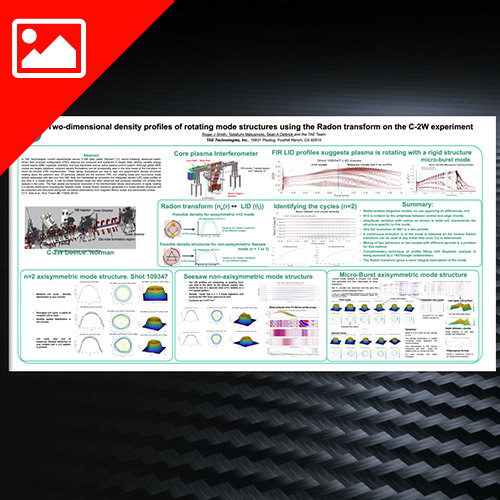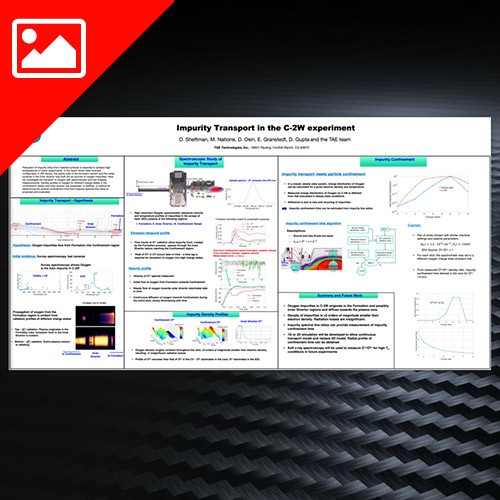
Oct 2019 | Research Library, Posters, Diagnostics, Experiment, Fusion Energy, Fusion Research, Fusion Science, Fusion Technology, Instabilities, Plasma Profiles, Plasma Research
October 2019 | Roger J Smith | APS-DPP | Poster
In TAE Technologies’ current experimental device, C-2W (also called “Norman”) [1], record breaking, advanced beam- driven field reversed configuration (FRC)

Oct 2019 | Research Library, Posters, Edge Control, Experiment, Fusion Energy, Fusion Research, Fusion Science, Fusion Technology, Plasma Research
October 2019 | V. Sokolov | APS-DPP | Poster
In TAE Technologies’ current experimental device, C-2W (also called “Norman”) [1], record breaking, advanced beam-driven field reversed configuration plasmas

Oct 2019 | Research Library, Posters, Confinement, Diagnostics, Experiment, Fusion Energy, Fusion Research, Fusion Science, Fusion Technology, Impurities, Plasma Research, Transport
October 2019 | D. Sheftman | APS-DPP | Poster
Reduction of impurity influx from material surfaces is essential to achieve high temperatures in fusion experiments. In the beam driven field reversed configuration C-2W device…

Oct 2019 | Research Library, Posters, Confinement, Experiment, Fusion Energy, Fusion Research, Fusion Science, Fusion Technology, Overview, Performance, Plasma Research
October 2019 | H. Gota | APS-DPP | Poster
TAE Technologies, Inc. (TAE) is a privately funded company pursuing an alternative approach to magnetic confinement fusion, which relies on field-reversed configuration (FRC) plasmas composed of mostly energetic

Oct 2019 | Research Library, Posters, Fusion Energy, Fusion Research, Fusion Science, Fusion Technology, Modeling, Plasma Research, Simulation, Theory, Transport, Turbulence
October 2019 | Calvin K. Lau | APS-DPP | Poster
Electrostatic particle-in-cell turbulence code. Nonlinear simulations show inverse cascade in SOL. Fluctuations spread from unstable SOL to stable core…

Oct 2019 | Research Library, Posters, Confinement, Diagnostics, Experiment, Fusion Energy, Fusion Research, Fusion Science, Fusion Technology, Performance, Plasma Research
October 2019 | M. E. Griswold | APS-DPP | Poster
In TAE Technologies’ current experimental device, C-2W (also called Norman), record breaking, advanced beam-driven field reversed configuration (FRC) plasmas are produced and sustained in steady state





